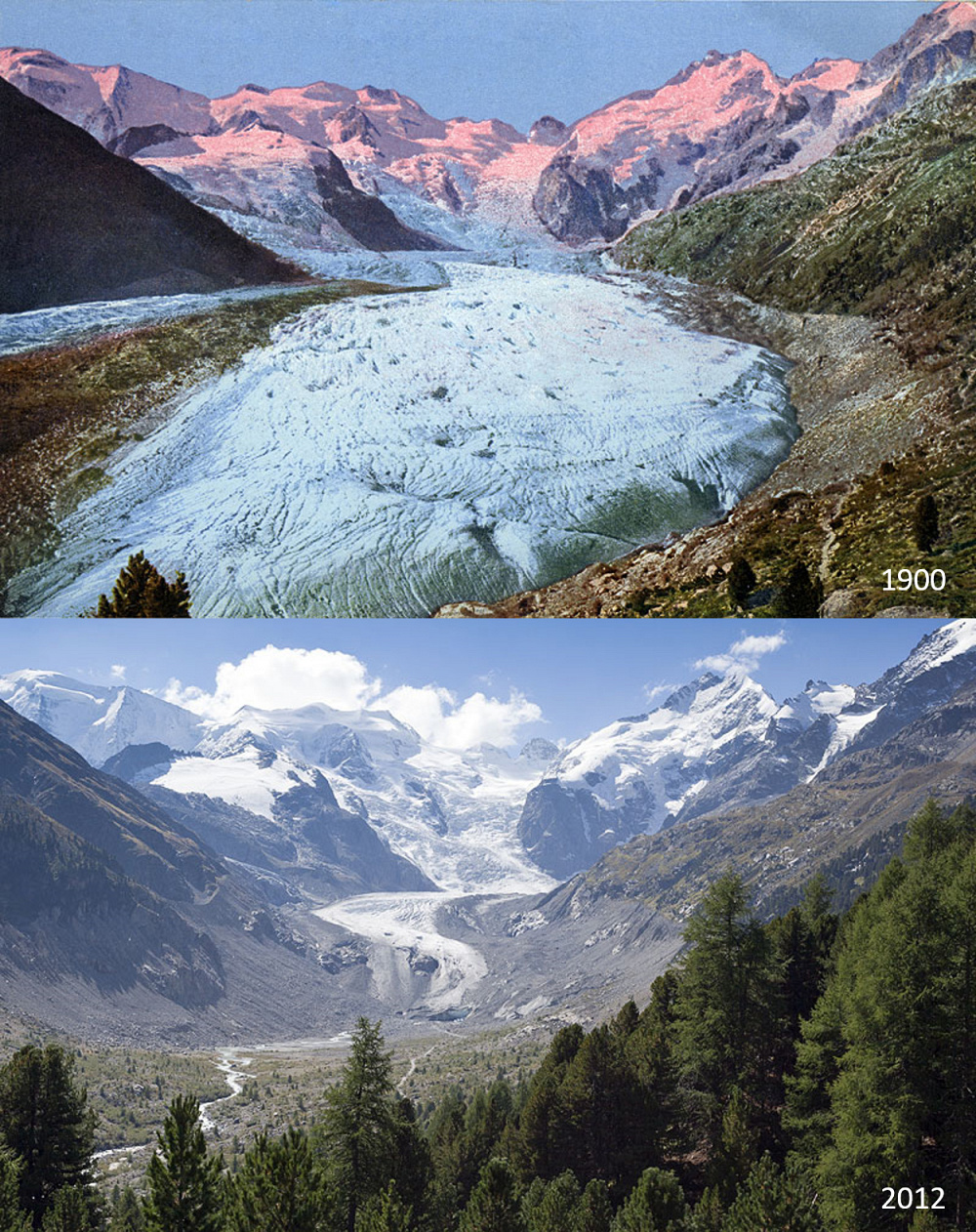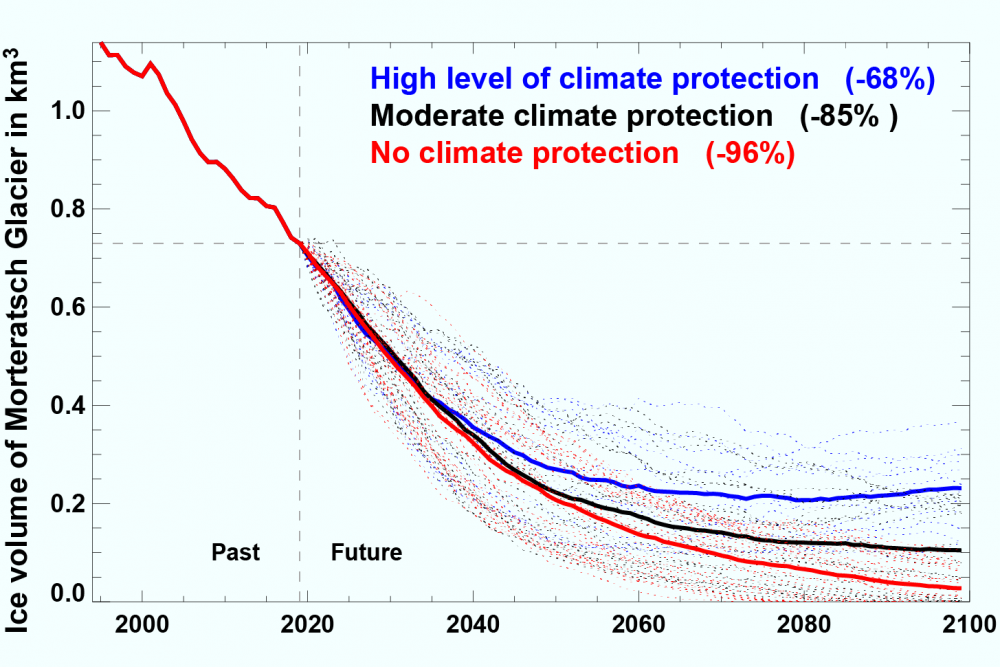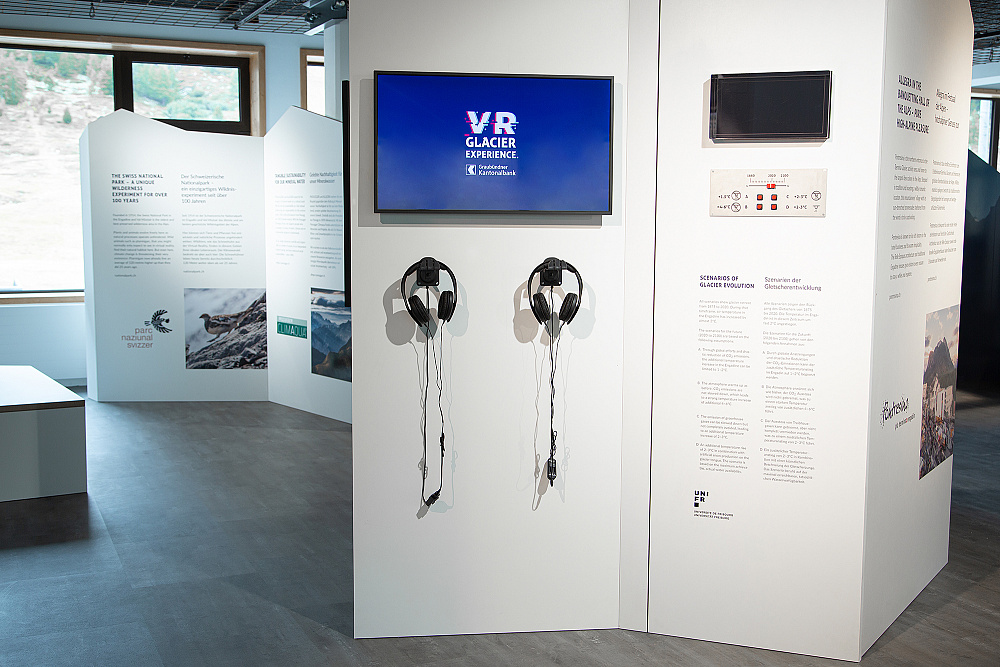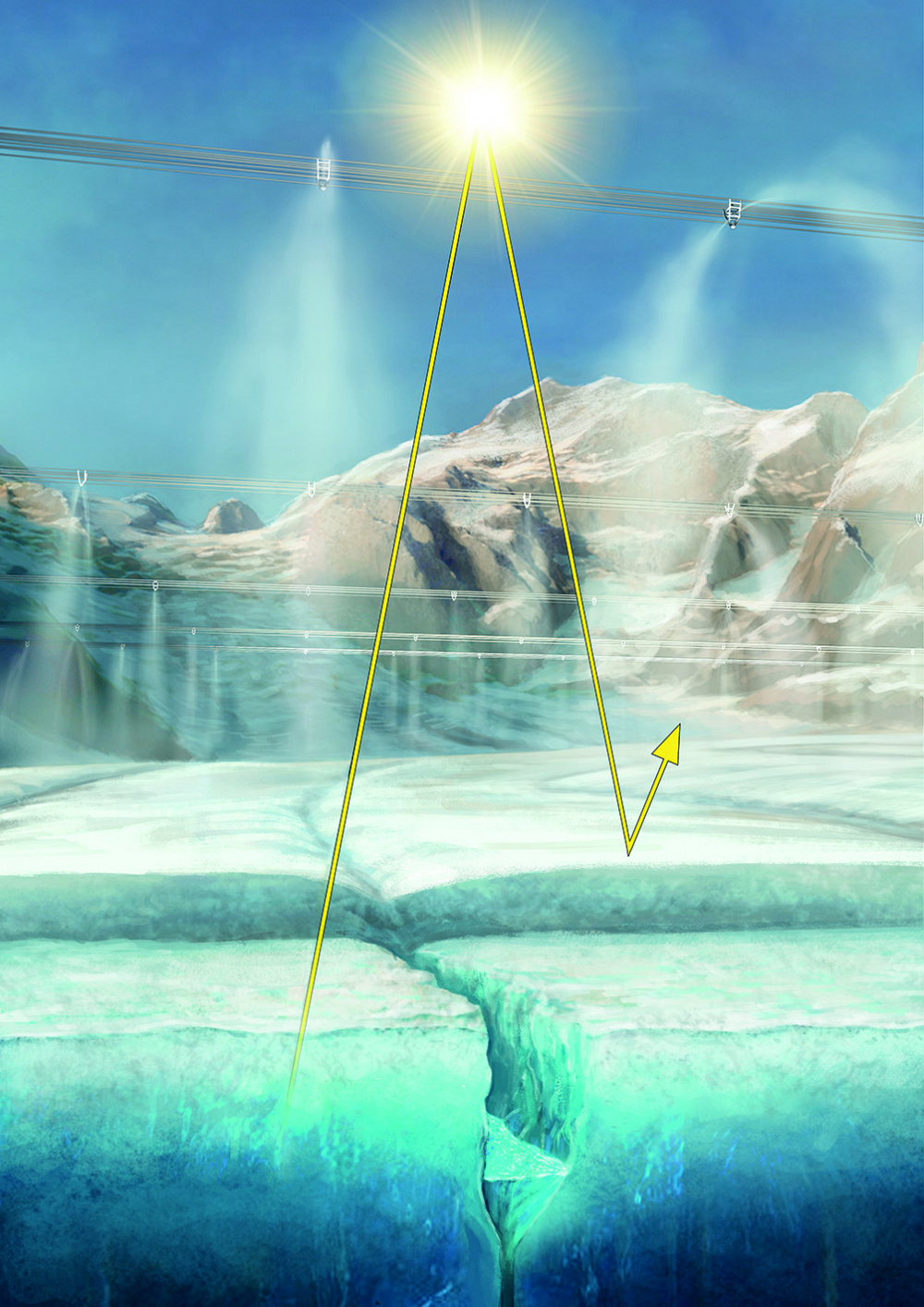The Morteratsch Glacier in the past and the future
The VR Glacier Experience came into being through the close collaboration between numerous scientists – the innovative team of researchers from the MortAlive project, the Knowledge Visualisation specialists from Zurich University of the Arts and the geoscientists from the University of Fribourg. In just under two years, they have compared notes with one another, processed the latest model calculations, weaved stories around these and brought it all together in a 3D design. The VR Glacier Experience makes complex relationships easy-to-understand for the general public.
The glaciers over the years
Some 20,000 years ago, a thick layer of ice covered the Alps – with the exception of the higher peaks. This last ice age came to an end approximately 15,000 years ago. In 1860, the last advance of the Morteratsch Glacier came to a halt a short distance away from where the Morteratsch train station stands today. The glaciers are now melting at a record rate. This has resulted in the emergence of rocks, debris and numerous new lakes. With the glacier ice, an important reservoir of fresh water is also melting. Should the glaciers continue to become increasingly smaller, the amount of melt water in the rivers will also decrease. This will have a huge impact in dry summers, and not just in the Alps – in mountain regions across the world too.
The glacier model of the University of Fribourg
Research has been carried out and measurements taken on the Morteratsch Glacier for around 150 years. Based on this data and many years of glaciological expertise, the University of Fribourg has developed a detailed calculation method to be able to record how the glacier is changing in a 3D model. This glacier model is driven by the latest generation of Swiss climate scenarios with the aim of calculating the future development of the glacier and the water run-off.
Glacier retreat: the past and the future
The Morteratsch Glacier has undergone a considerable glacier retreat in the last 150 years. The glacier tongue has retreated by three kilometres and the entire glacier has lost about two-thirds of its volume. Since the first measurement was taken in the Engadine, the temperature has risen by almost 2°C. The future glacier change was calculated with respect to three climate scenarios:
- High level of climate protection with a drastic reduction in CO2 emissions around the world.
- Moderate climate protection with less greenhouse gas emissions than today.
- No climate protection with no restrictions placed on CO2 emissions up to 2100.
In each case, we must anticipate a further massive reduction in the volume of the glacier. Even with a favourable development of the climate, two-thirds of the present-day ice masses will melt; however, if we do not massively reduce CO2 emissions, almost all of the ice will melt. The glacier retreat will also be accompanied by a considerable drop in water run-off in the summer, particularly if CO2 emissions are not reduced.
Covering the glacier in artificial snow
There have been discussions for a number of years about the possibility of saving the Morteratsch Glacier using artificial snow. The production of snow using new technology and the availability of the water required have been incorporated into the glacier model to show how this will impact the ice reserves. The calculations performed at the University of Fribourg reveal that a further retreat by the Morteratsch glacier cannot be prevented. Although the part of the glacier tongue covered in snow will remain, the rest of the glacier will split off from around 2050 onwards. The main problem is finding the corresponding amount of water required to produce the snow – even with a large artificial reservoir at Isla Persa, not enough snow could be produced.
The final report of the scientific study «Morteratschgletscher 2020-2060 – Klimaszenarien und Gletscherentwicklung» by the University of Fribourg shows that MortAlive has a positive, but limited effect on glacier retreat and that the technology for snow production is applicable over the entire project duration (approx. 2030-2060) if an artificial water reservoir is available. The glaciological feasibility study however also clearly indicates that implementation of MortAlive could not stabilize the Morteratsch glacier even under the most favorable climate scenario.
The following people from the University of Fribourg worked on the project: Martin Hoelzle, Andreas Linsbauer, Matthias Huss, Enrico Mattea, Bruno Meeus and Christine Levy.
MortAlive
Even during the summer months, a fresh layer of snow can reflect the sunlight and thus protect the glacier. This is the original hypothesis of MortAlive. The only question is how will it snow in the middle of summer? Conventional snow lances cannot be used due to the movements of the glacier and the system has to forego using electricity to transport the water and produce the snow. An innovative spirit was needed and was found in the form of the snow-making pioneers, Bächler Top Track AG and Bartholet Maschinenbau AG. They developed the NESSy ZeroE, which stands for “New Energy-efficient Snow System”. This ensured that artificial snow could be produced without the need for electricity – all that was needed was melt water, a jet pump, a sufficient amount of water pressure and this sophisticated technology. This groundbreaking development has already been patented.
In the current climatic conditions, the glacier tongue would begin to grow again in ten years’ time if one square kilometre of the glacier were to remain covered with snow all year round. Even in the event of a temperature increase, MortAlive can slow the melting of the glacier.
The two scientists Felix Keller and Johannes Oerlemans are the brains behind MortAlive.
Contact
Diavolezza valley station
CH-7504 Pontresina
+41 81 839 39 10
info@glacierexperience.com
Directions
Opening hours
Daily: 09.30 to 16.00
If the Diavolezza cable car has to be closed for several days due to bad weather, the visitor centre will also be closed.
Info: Status display website or phone +41 81 838 73 73.
The entire visitors’ centre is fully accessible.






